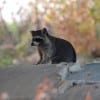 By Jim Stevenson
By Jim Stevenson
First, Birds of Galveston has finally gone to press, and should be picked up late next week. I am already addressing the envelopes, so they will be mailed Monday week, in PLENTY of time for Christmas. Thank the Lord. I am confident the thicker, more field-friendly size will be preferable, and serve as an in-depth guide to Galveston and the Upper Texas Coast for many years to come. I am very excited about it, though dead tired.
To the Bobwhites, this extraordinarily cold weather will surely send exciting, northern birds our way. Keep an eye out! OK, this article is one on fall animals I’ve shot, not birds. Hope you enjoy!
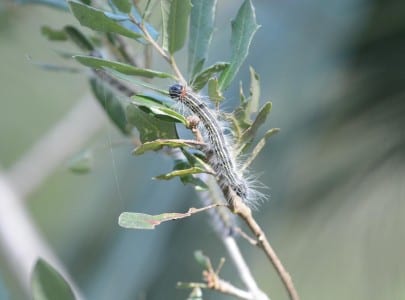
Arthropods have an amazing assortment of larval stages, like caterpillars. Their bodies appear sectioned, which led scientists to think it hearkened back to their segmented worm ancestry. Now we’re not so sure. Many caterpillars have interesting defenses, with some having poisonous spines for protection. I doubt these are harmful, but my ignorance of entomology encourages my caution.
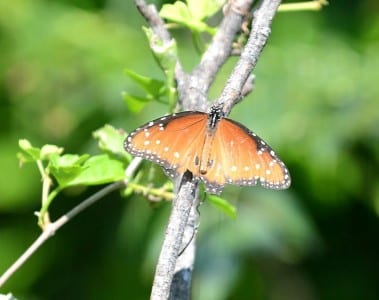
I seem to recall this being a Viceroy, as I’m pretty sure it’s not the famous Monarch with the “poisonous” wings. I have resisted getting scientific with butterflies, like I do with most animals, coz I just want to enjoy their beauty. Still, we all know a few things… And there’s that segmentation on the abdomen, reminiscent of a flying segmented worm.
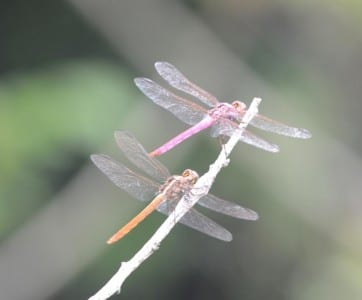
Dragonflies are another insect group many birders have gotten into. I wonder if it’s partly that they also fly??? I seem to remember these are pond skimmers of some sort, and I suspect this is a pair, with sexual dimorphism. I do love my mosquito hawks, and at times there’s quite a smorgasbord here!
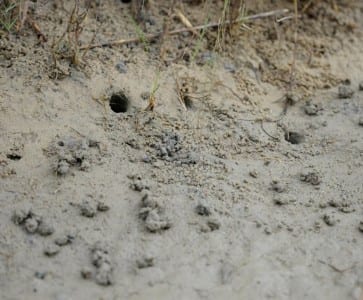
Other arthropods have thicker chitinous exoskeletons, belonging to the crustacean class. These are fiddler crabs, I suspect Ucapugilator. The large balls of sand/mud were left by males; the smaller ones were discarded by the gals. The size disparity is owing to males have much larger claws than females. They feed by sifting through sand/mud for bacteria and such, and the discarded clumps of “dirt” signal their activities.
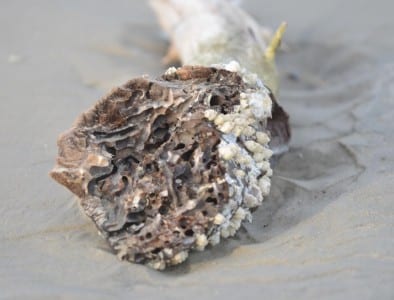
It’s hard to be around the sea without “seeing” barnacles somewhere. These are like upside down shrimp living in a cup they create. They have two “doors” that open and shut: They feed with the doors open and protect themselves with the doors shut. Some birds like turnstones have chisel bills that can break through the door defense.
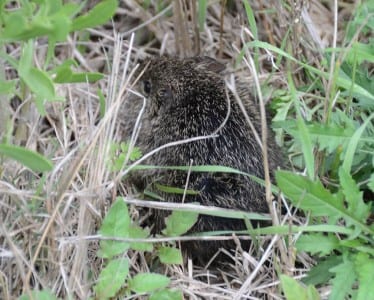
Cotton Rats are an amazingly abundant mammal, acting as the chief food source for the Island’s harriers, kites, red-tails, kestrels and even herons and egrets sometimes. And that’s not to mention Coyotes, two pit vipers and Lord only knows what else. They are the rat of natural areas. Around houses there are “domestic” species like Norway and Black Rats, both with much longer tails than these “Sigmodon” rats. Those two Old World rats are in the genus “Rattus.”They spread diseases, as can be read about in Albert Camus’ famous book, “The Plague,” but Cotton Rats do not.
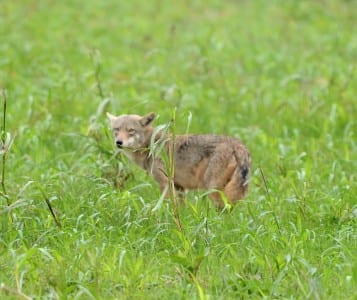
Coyote continue to colonize the Island, and many other places where humans tolerate their presence. Or not. This young female is trying to decide if my camera shoots real bullets. This species is largely a solitary animal, although they den in the mound on which my house sits. The guy who owns cows out here drives around shooting at them in the middle of the night, claiming they eat his calves. No comment.
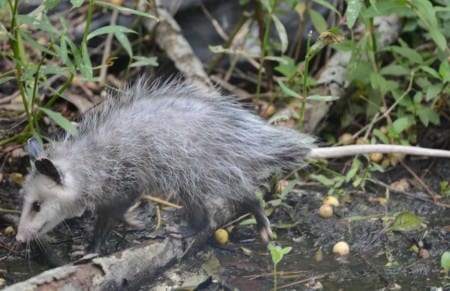
My half-pet possum wanders around my house at night, or on cold days, trying to scarf up a bit of food here and there. At times I get weak and toss him scraps, although I know I probably shouldn’t. It’s tough being human. Life is a journey for them since birth, but the evolutionary one they took from Australia, across the Antarctic, and up the Americas will rank as one of the top range expansions in all zoology.
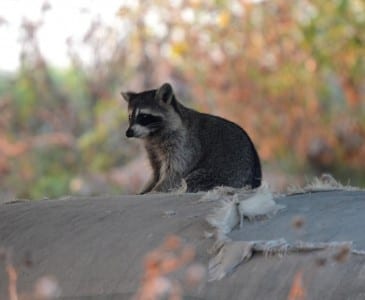
Racoons are one of the truly adaptable animals in our Country. This youngster is feeding on cat food unwisely left under the San Luis Pass Bridge, and is getting way too tame with passing people. Coons are vectors for rabies and I had hoped this sorry chapter in Galveston’s life was passed. Cute little bugger, though.
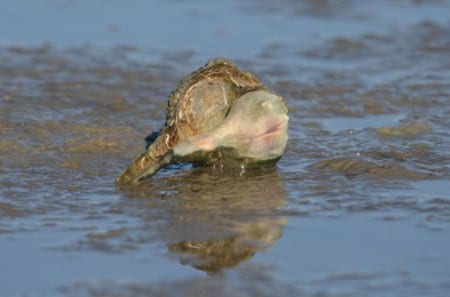
Now here is a strange one. This Lightning Whelk, the Texas State Shell, has bonded with a larger, older shell for protection. Gastropods are a strange bunch. What’s really cool is that this kind has the opening on the left side* instead of the right (of other gastropods), and has connected with one of the larger, right-handed ones. Not sure I’ve seen that before. *Thus, the name B. contrarium (or B. perversum), refers to being opposite-handed, an amazing example of artificial selection. Native Americans would eat the right-handed ones, which were incredibly numerous, but wouldn’t eat the few left-handed shells that were mutations, as they thought them to be sinistral (evil). Er go, superstitious humans caused these species of right-handed whelks to eventually become left-handed, as an agent of artificial (human) selection. How cool is that? By the way, the whirls on the top of the shells have an interesting pattern. The second one is twice as large as the first, the third one three times as large, then five times, eight times, thirteen times, etc. Do you recognize it? It’s the Fibonacci sequence, numbers in an order created from taking the last two numbers and adding them together. So again, I ask you: How cool is that?
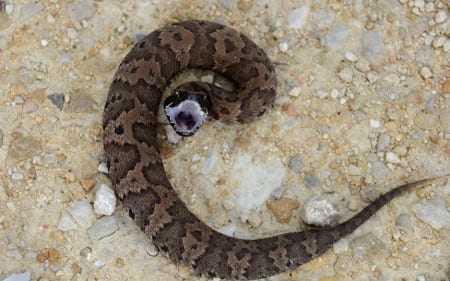
Fall is a great time to look for pit vipers, and this baby Cottonmouth seems eager to get to know me. The broken hourglass pattern indicates a Cottonmouth, not a Copperhead, plus the dark mask. You can also see the white mouth (thus the name), the elliptical pupils, and the yellow tail tip of baby CMs and CHs. This one couldn’t kill you, of course, but their hemotoxic venom is more painful than you can possibly imagine. I know… BTW, many animals avoid fights by displaying their weapons, this the fang show.
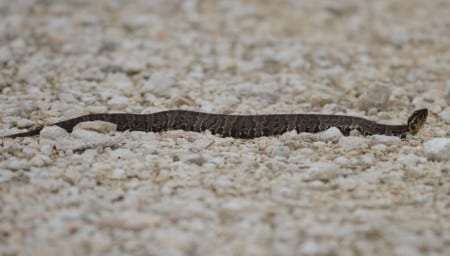
Here it is from the side, showing the pit viper habit of holding the head up 45 degrees. They have a flat head (bad angle) and a very stout body. Cottonmouths are largely aquatic but will venture into drier places in fall to find hibernation plots. The bands break up the form of the snake and allow it to hide better.
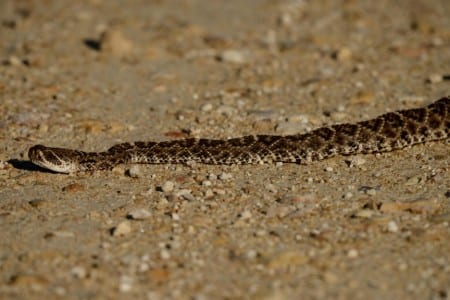
In the same pit viper family is the Western Diamondback Rattlesnake, easily identified by the diagonal eyestripe and dark “diamonds” dorsally. Not an exceedingly friendly species they rise up and may strike well above other pit vipers. The more dangerous Eastern DB of my home state of Florida grows larger and packs more potent venom. And that’s to say nothing of its football teams. Keep those cards and letters comin’.
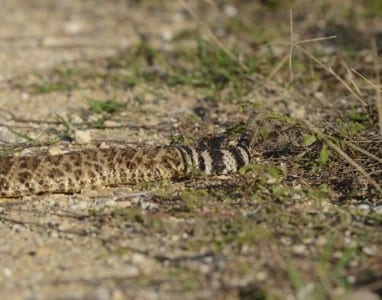
The “coon tail” of the Western DB is diagnostic, in case you’re too comatose to realize what that snake is. 😉 You can also see the rattles, which make a loud, buzzing sound to warn predators. This is because snakes don’t want fights, even ones they win, because they can receive injuries that could prove fatal later. Just so you’ll know me better, I have an extremely low opinion of people killing snakes, as the height of environmental apathy. It even ranks ahead of back seat driving.
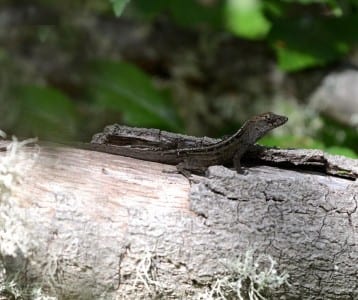
A fairly new resident on the Island is the Bahaman Bark Anole, now running around in Laffite’s Cove, and probably other places. They are displacing the native Green Anole, which has made it to Galveston from the Mainland as the Island’s forests developed. As lizards, they have movable eyelids and external ear openings, plus a tail that will break off and grow back. Notice the rough, textural difference with the next lizard.
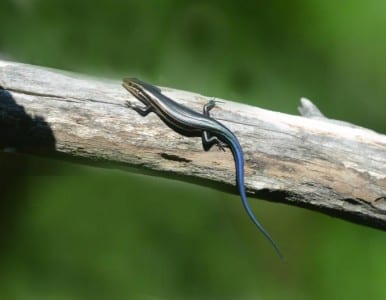
Five-lined Skinks have been unwittingly introduced to the Islands, probably through their eggs in potting soil. The young have blue tails with a neurotoxin that will render predator species temporarily harmless, and even kill cats. Adult males are now in Laffite’s Cove with their red heads, and females look like immatures but lack the blue tail. Skinks are lizards with smooth, shiny skin.
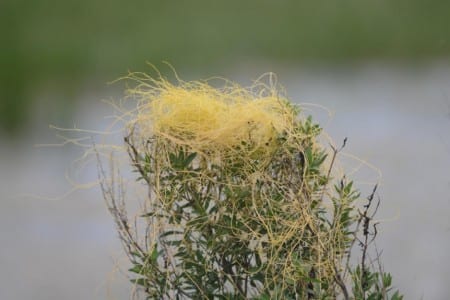
This is dodder, often called spaghetti grass in the vernacular. It is in the genus Cuscuta, and is a parasitic plant. This is why it’s not green, because it doesn’t requite chlorophyll, as it robs other plants of food. In this area, it grows atop low bushes in salty areas, looking like a poorly-woven bird nest.
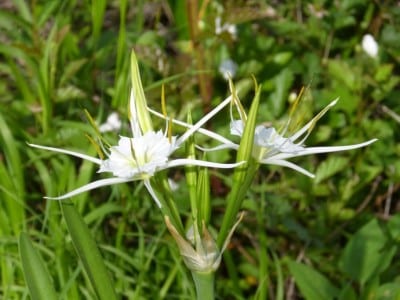
Spider lilies grow in wet areas like ditches in the South, adding their regalia to the colors of fall. This one has a nice set of anthers, a male part of the flower with the long, yellow structures. I think these are monocots, and appear to be monoecious, or an organism with only one set of sex cells. I really liked my botany professor in grad school, but man, he believed some weird stuff! Seriously, you guys stay warm and let the winter rage outside.
[contact-form-7 404 "Not Found"]

 Posted in
Posted in 
























I love learning about the natural life on the peninsula. Thank you for the information. Where can I learn more about the birding book to which you refer? Is it available for purchase?